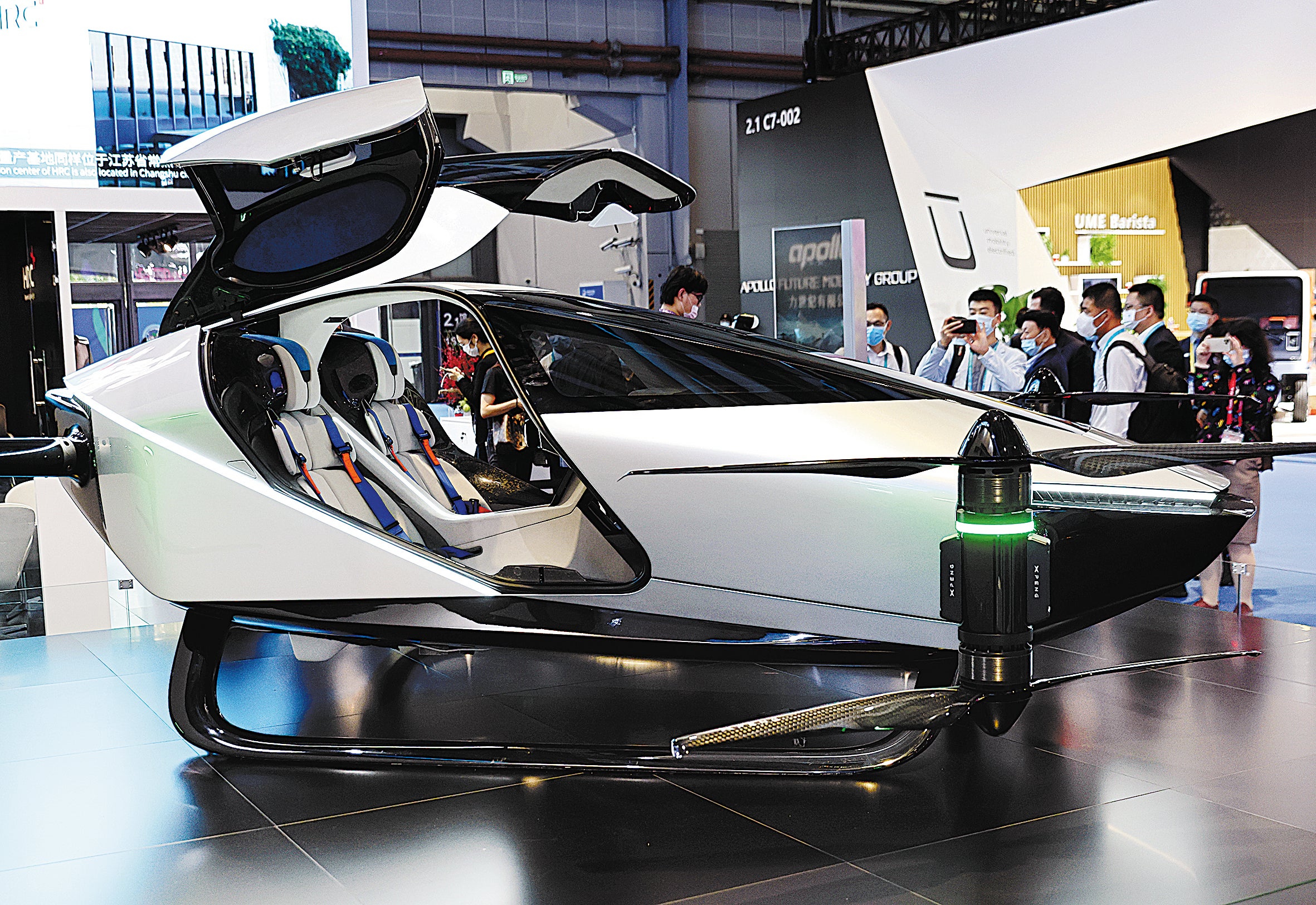Cars of the future await clearance for take-off
THE ARTICLES ON THESE PAGES ARE PRODUCED BY CHINA DAILY, WHICH TAKES SOLE RESPONSIBILITY FOR THE CONTENTS

Traffic jams are a common problem in cities around the world, be it Beijing, Tokyo or New York, with some frustrated drivers wishing they could fly over vehicles blocking their path.
Such ambitions may be fulfilled sooner than many expect, with “flying cars”, commonly known as electric vertical take-off and landing vehicles, or eVTOLs, fast becoming a reality.
HT Aero, an affiliate of Chinese electric vehicle maker Xpeng, demonstrated a flying car in October, saying it plans to introduce these vehicles in 2024.
The cars will feature a lightweight design and rotors that fold away, so that the vehicles can be driven on roads before and after flight. With a number of safety features, including parachutes, each vehicle will cost less than one million yuan (£117,800), the company said.
Globally, some 250 companies are developing and producing flying vehicles, and the list is growing, according to a report by consultancy McKinsey.
Robin Riedel, a McKinsey partner, said the flying cars sector has existed for more than a decade, and the “convergence of several trends” has led to increased interest in it.
“First, on-demand services have changed the way we think about mobility. Second, there’s a focus on sustainability, which these vehicles support. Third, there’s a lot of funding available from investors who want to be a part of the next big thing,” Riedel said.
HT Aero, which in October raised $500million (£375 million) in its latest financing round, is now valued at more than $1billion. Start-up Joby Aviation, based in the United States, went public on the New York Stock Exchange in August, while Lilium, headquartered in Germany, is also planning a flotation.
The emerging flying vehicles sector, which is now viewed as a serious solution to urban traffic congestion and a new alternative to personal mobility in cities, is expected to grow into a market valued at $1 trillion (£7.5 billion) by 2040 and $9 trillion (£6.8 trillion) by 2050, according to global financial services company Morgan Stanley.
Flying vehicles are typically about the size of ordinary ones, or slightly larger. Featuring rotors, or wings and rotors, most of them will fly at speeds of 60 to 180 miles per hour and carry several passengers
Powered by batteries, the cars have less complicated parts than ordinary vehicles, and are safer than light aircraft such as helicopters. Without traditional engines, they are quieter and are also expected to be cheaper.
Fabien Nestmann, vice-president of public affairs at Volocopter, a company based in Germany that focuses on making flying an option for everyone and on reinventing mobility in urban areas, said: “We don’t want this to be a toy for the wealthy, but part of a well-integrated journey for anyone in an urban area. Everyone should have the option to walk, be driven, cycle, or fly.”
Established in 2011, Volocopter is one of the world’s first flying vehicle companies. In 2019, Chinese carmaker Geely, Mercedes’s parent company Daimler and others invested €500million (£425 million) in the start-up in an effort to bring its flying cars to China.
In September, Volocopter and Geely built a joint venture in Chengdu, capital of Sichuan province, to produce flying vehicles and parts. Volocopter said the joint venture has also signed a deal to buy 150 flying vehicles from the company.
The partnership is aimed at bringing urban air mobility to China in the next three to five years, which Volocopter CEO Florian Reuter views as “the biggest single market opportunity for the urban air mobility industry”.
To date, no eVTOLs have won type certificates, which show the aviation authorities’ acceptance of an aircraft’s design.
After this process, which may take years and millions of dollars to complete, other credentials will be required, such as airworthiness certificates, before the vehicles can take to the air.
Gary Gysin, CEO of flying car designer and producer Wisk, which is based in the US, said there is also a lack of regulations for the sector.
“Globally, we’re finding that many countries are still figuring out what eVTOLs and urban air mobility regulations look like.”
Previously published on Chinadaily.com.cn
Subscribe to Independent Premium to bookmark this article
Want to bookmark your favourite articles and stories to read or reference later? Start your Independent Premium subscription today.